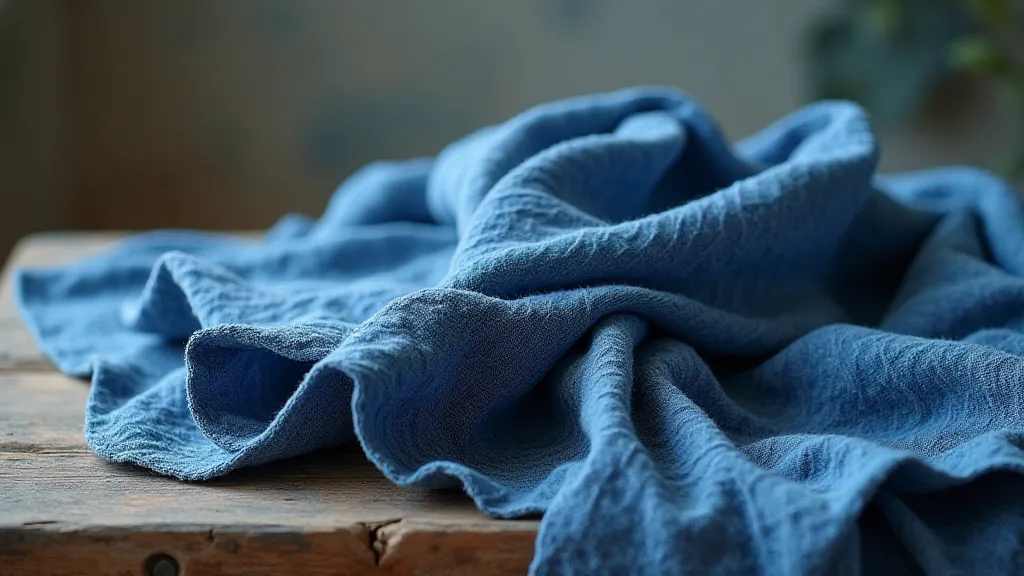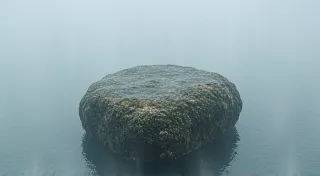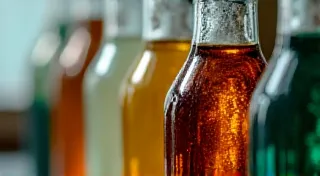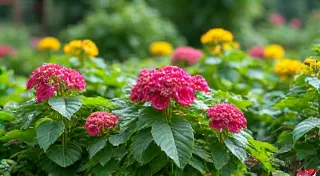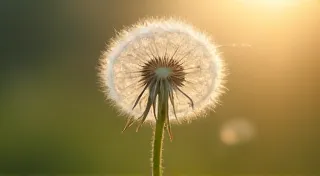The Indigo River: Tracing Ancestry Through Dye
The scent of fermentation. It’s a smell I associate with my grandmother’s kitchen, a place filled with laughter, stories whispered across generations, and the quiet hum of tradition. But it’s also a smell inextricably linked to indigo, the deep, enduring blue that has colored cultures and lives across the globe. More than just a pigment, indigo is a narrative, a lineage, a living connection to the artisans who came before. It's a story etched not just in cloth, but in the very DNA of a community’s identity.
My grandmother, Elsie, rarely spoke directly about her own family’s history. She was a woman of few words, her stories unfolding in the gentle curve of her hands as she mended clothes or the subtle tilt of her head when she listened. But I knew, instinctively, that indigo held a special place within her family’s past. My great-grandfather, Elias, was a dyer in rural Arkansas, a trade passed down from his German immigrant parents. The techniques he employed weren't merely practical; they were ritual, imbued with a reverence for the natural world and a deep understanding of the slow, deliberate process of transformation. That slow transformation, mirroring the passage of time and the continuity of family, is what I’ve come to cherish about traditional textile dyeing. The process itself—the patience, the attentiveness to subtle changes—felt almost alchemical, a sense reinforced by the incredible variations achievable even within a seemingly simple color. Exploring the nuances of natural color, in fact, often leads one to appreciate the broader realm of tonal exploration – as one might find in a study of achromatic bloom.
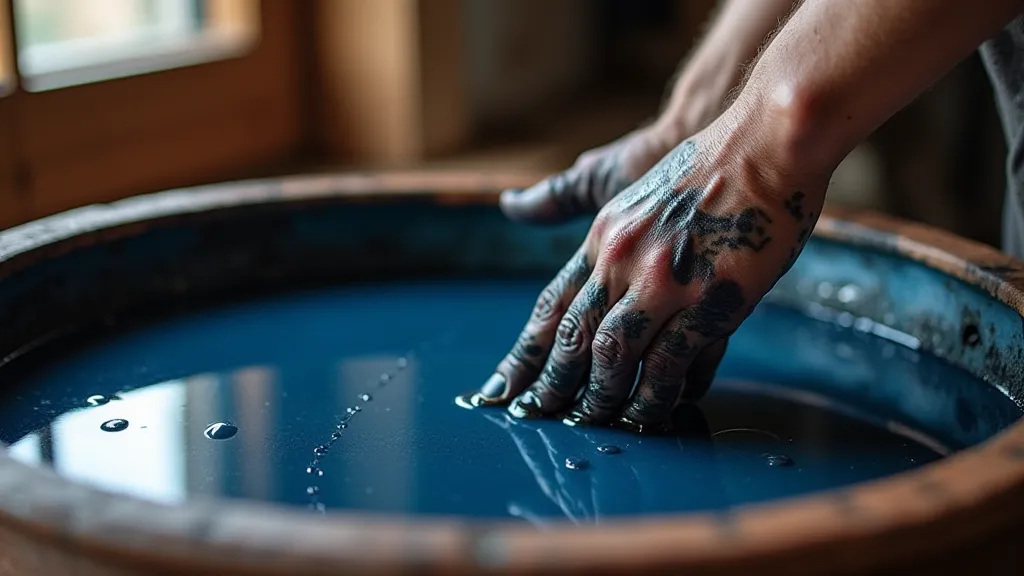
The Alchemy of Nature: Indigo Around the World
Indigo’s journey is as compelling as the dye itself. Sourced from plants like Indigofera tinctoria (found primarily in Asia) and Indigofera suffruticosa (common in the Americas), the process of extracting and fixing the color is surprisingly complex. The leaves are harvested, crushed, and then subjected to a fermentation process that allows the indigo pigment to be released. This released pigment isn't blue initially; it's a yellow-green compound. It's only when exposed to air, through a series of oxidation and reduction reactions, that the familiar deep blue emerges. Each dip in the vat, each oxidation step, contributes to the richness and depth of the final hue. And each culture developed its own nuances within this basic process.
In Japan, the tradition of aizome— indigo dyeing—is an art form elevated to exceptional heights. Japanese artisans meticulously control every aspect of the process, creating fabrics of breathtaking beauty and subtle variations in shade. The use of resist techniques, like shibori, where sections of the fabric are bound, stitched, or clamped to create intricate patterns, showcases a profound understanding of both the dye’s behavior and the artistic possibilities it offers. The intricate precision involved in techniques like shibori speaks to a broader philosophy of intentional disruption, a deliberate introduction of controlled rupture in the dyeing process to unlock artistic potential – a concept further explored in Boundaries Dissolving: Shibori and the Art of Controlled Rupture.
Similarly, in West Africa, indigo dyeing, often known as adire, is integral to cultural identity. The distinctive patterns, created using resist techniques and often incorporating symbolic motifs, are a powerful form of visual storytelling.
The Arkansas indigo, the legacy of my great-grandfather, was a different story. It wasn’t about the refined elegance of aizome or the vibrant symbolism of adire. It was about survival, about providing for a family, about a connection to the land. It was a practical craft, yes, but also a quiet act of defiance against the relentless march of industrialization. My grandmother often spoke of how, as factories began churning out cheaper, mass-produced fabrics, the demand for hand-dyed indigo dwindled. Yet, her father continued, clinging to the tradition, not for profit, but for the sake of connection—to his ancestors, to the earth, and to a way of life that was slowly fading. The feeling of a deep connection to place, amplified through the act of creating something tangible, resonates deeply. Sometimes, it feels as if the dye itself is whispering stories, imparting ancient wisdom - an insight that finds further expression in When the Dye Whispers: Intuition and Textile Alchemy.
The Language of Blue: Symbolism and Significance
Beyond the technical aspects of dyeing, the color indigo itself carries profound symbolic weight across cultures. In many societies, blue is associated with spirituality, wisdom, and healing. It’s a color that evokes a sense of calm and introspection. In some Hindu traditions, indigo represents Krishna, a revered deity known for his deep blue skin. In China, blue dyes were historically reserved for the robes of royalty and high-ranking officials.
For my family, indigo wasn’t just a color; it was a marker of identity. My grandmother’s mother’s family—the dyers—were recognized within the community. The skill was passed down through the women, a silent inheritance of knowledge and responsibility. It wasn’t just about the practical knowledge of harvesting indigo plants or managing fermentation; it was about upholding a legacy, ensuring that the skills and stories of the ancestors would not be lost. It’s a heavy burden, the responsibility to carry on traditions, to maintain a connection to the past while navigating the complexities of the present. The weight of color, the significance imbued within a single hue, profoundly shapes our perceptions and understanding – a concept that is explored in greater detail in The Weight of Color: How Dyes Shape Perception.
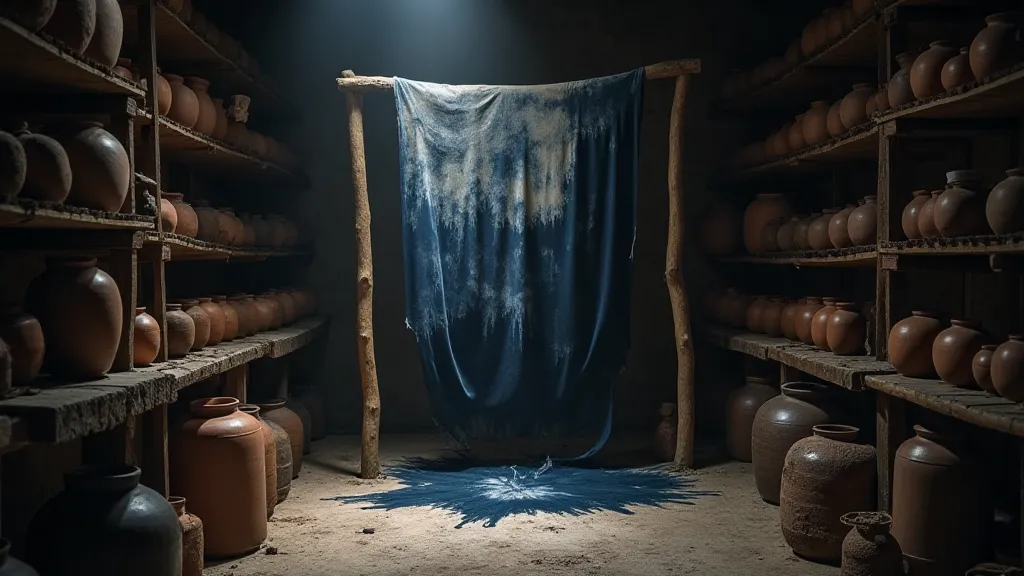
Restoring a Legacy: Collecting and Appreciation
Today, with the resurgence of interest in handcrafted goods and sustainable practices, traditional textile dyeing is experiencing a revival. Collectors are increasingly drawn to antique indigo-dyed textiles, not just for their aesthetic beauty, but for the stories they hold – tales of skill, perseverance, and cultural significance. Antique indigo-dyed textiles often display unique characteristics: subtle variations in color due to the natural dyes, visible imperfections from the hand-dyeing process, and traces of age that add to their charm. These imperfections, often seen as flaws in a modern, mass-produced world, are actually testaments to the unique journey of each textile, each one bearing the fingerprints of its maker and the passage of time.
Restoring these pieces, however, requires a delicate touch. Harsh chemicals or abrasive cleaning methods can damage the fabric and erase the history embedded within it. Instead, careful conservation—cleaning with gentle, natural solutions and stabilizing the fabric—is the preferred approach. It’s a way of honoring the original artisan’s efforts, ensuring that the story of the textile continues to be told.
The fragility of these textiles, and the crucial need for their careful stewardship, highlights a broader truth: that our connection to the past is tenuous, reliant on the diligence of those who seek to preserve it. The knowledge and skills of generations aren't easily transmitted; they're lost, diluted, or reinvented with each passing year. It is incumbent upon us to actively seek out and support those who are dedicated to keeping these traditions alive, to ensuring that the stories embedded within these textiles continue to be heard.
The slow, deliberate process of restoration mirrors the even slower process of historical understanding. We are constantly piecing together fragments of the past, using every available clue to reconstruct a more complete picture. The textiles themselves serve as tangible links to those who came before, offering glimpses into their lives, their beliefs, and their artistry. Examining the dye, feeling the weave, and tracing the patterns – these are all acts of communion with the past, moments of profound connection to a lineage that stretches back through time.
The scent of indigo always brings me back to my grandmother's kitchen, to the quiet dignity of my great-grandfather, Elias, and to the understanding that craftsmanship is more than just a skill—it’s a bridge across generations. It’s a tangible link to the past, a reminder of the enduring power of human creativity, and a testament to the beauty preserved.
